 |
 |
 |
| |
Effectiveness and durability of dolutegravir/rilpivirine in older people with HIV from the Veterans Aging Cohort Study (VACS)
|
| |
| |
AIDS 2024 July 20-26 Munich
L. Yan1,2, C. Henegar3, V. Marconi4,5, C. Hicks3, V. Vannappagari3, A. Justice1,2, M. Aslan1,2
Institutions
1Veterans Affairs (VA) Cooperative Studies Program Clinical Epidemiology Research Center (CSP-CERC), VA Connecticut Healthcare System, West Haven, CT, United States, 2Yale University, New Haven, CT, United States, 3ViiV Healthcare, Research Triangle Park, NC, United States, 4Atlanta VA Medical Center, Atlanta, GA, United States, 5Emory University, Atlanta, GA, United States
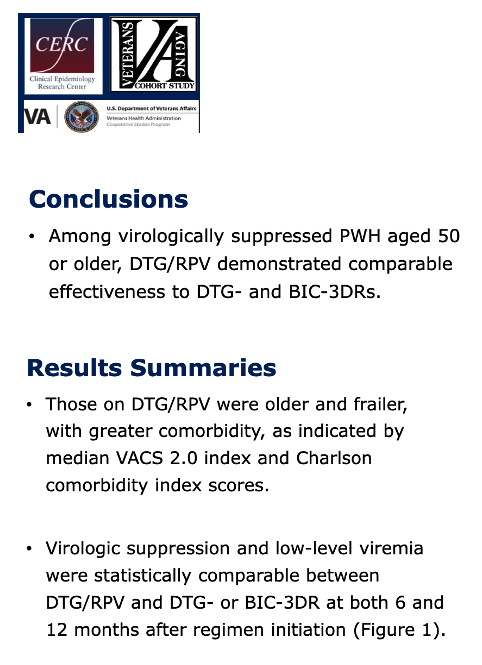
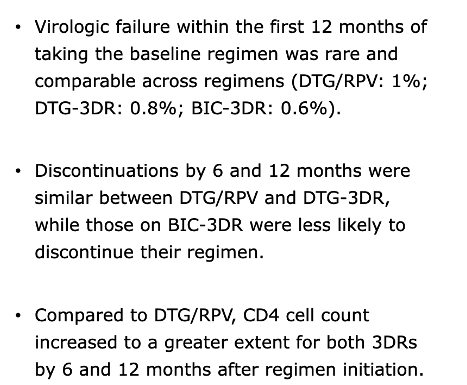
BACKGROUND: Dolutegravir/rilpivirine (DTG/RPV) is a 2-drug antiretroviral regimen efficacious as a switch therapy in clinical trials. Data on real-world use of DTG/RPV among older people with HIV (PWH) remains limited.
METHODS: Treatment-experienced, virologically suppressed [viral load (VL) <50 copies/mL] PWH enrolled in the Veterans Aging Cohort Study (VACS), =50 years old and switching to DTG/RPV, DTG- or bictegravir (BIC)-based standard 3-drug regimens (3DRs) 01JAN2014 – 30SEP2022 were included. Virologic suppression [VS; VL <50 copies/ml], low-level viremia (LLV; VL =50 and <200 copies/ml), and regimen discontinuation were compared 6- and 12-month post-regimen initiation (baseline). Virologic failure (VF; 2 consecutive VLs =200 copies/ml, or 1VL =200 copies/ml followed by regimen discontinuation) was evaluated over 12 months. Change in CD4 cell count from baseline was assessed at 6 months. Outcomes were compared using inverse probability of treatment weighted logistic or linear regression.
RESULTS: Of 9,933 treatment-experienced, suppressed older PWH (97% male, 8% Hispanic, 47% Black), PWH who switched to DTG/RPV (n=682) compared to those switching to DTG-3DRs (n=4,793) or BIC-3DRs (n=4,458) were older (52% =65 years vs. 35% on DTG-3DRs and 39% on BIC-3DRs). VS was statistically comparable at 6 (94% DTG/RPV vs. 92% DTG-3DR and 93% BIC-3DR) and 12 months (94% DTG/RPV vs. 92% DTG-3DR and 92% BIC-3DR). LLV at 6 and 12 months was also comparable between regimens. VF was uncommon (0.5% DTG/RPV vs. 0.9% DTG-3DR and 0.5% BIC-3DR). Mean CD4 decreased over 6 months for DTG/RPV but increased for DTG-3DR and BIC-3DR, although the magnitude of differences was small. Discontinuations were similar between DTG/RPV and DTG-3DR. BIC-3DR showed fewer discontinuations at 6 (BIC-3DR: 4% vs. DTG/RPV: 9%) and 12 months (7% vs. 15%).
CONCLUSIONS: Among older PWH, DTG/RPV demonstrated high levels of virologic effectiveness comparable to DTG- or BIC-based 3-drug regimens, but with smaller immune responses. DTG/RPV was discontinued more frequently than BIC 3-DRs.
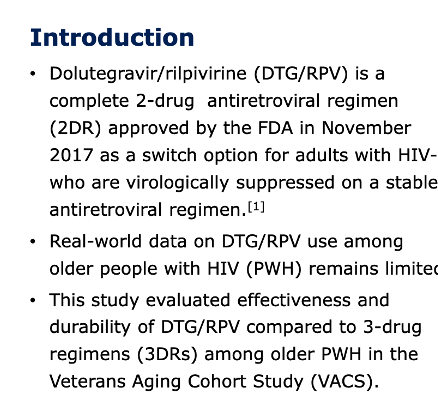
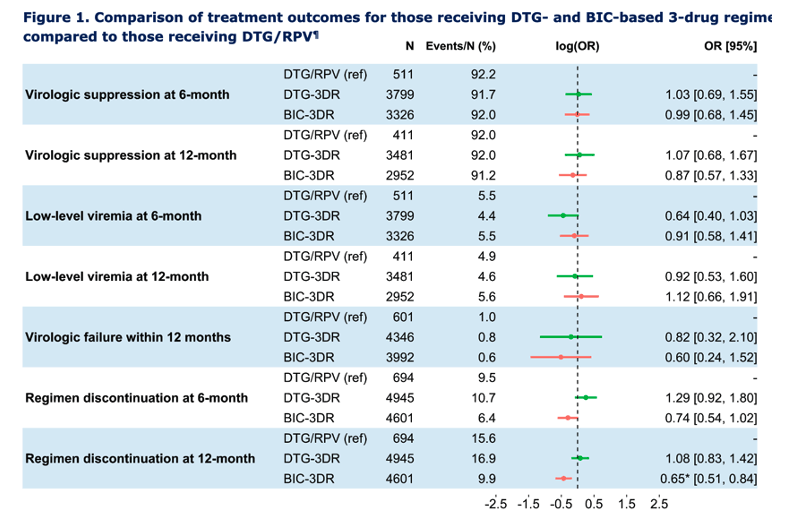
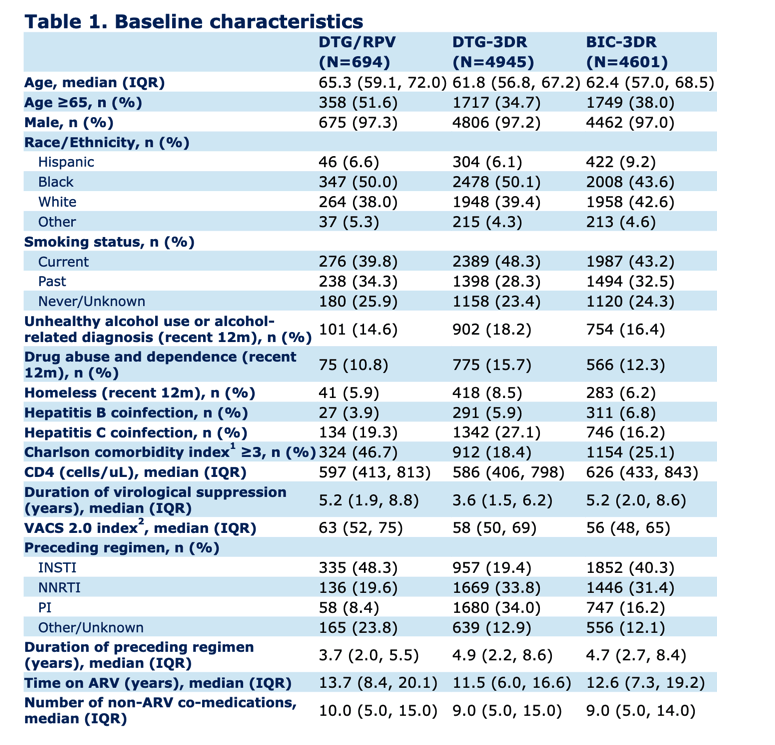
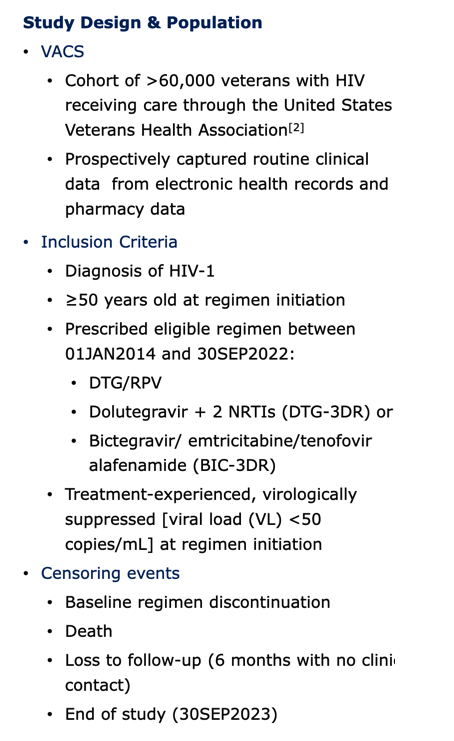
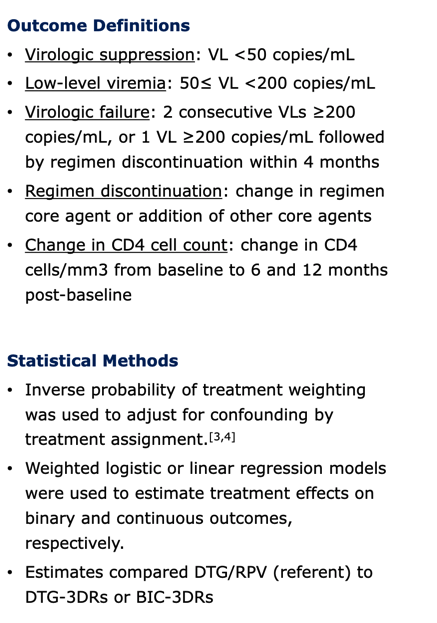


|
| |
|
 |
 |
|
|